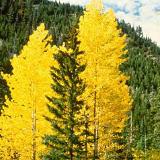 © Pete Saloutos/Panoramic Images (Washington Title Image Large)
© Pete Saloutos/Panoramic Images (Washington Title Image Large)

Okanogan Vegetation
In the Okanogan ecoregion, native plant cover ranges from alpine tundra to semi-arid shrub. The ecoregion’s plant communities vary with elevation.
At the highest elevations, alpine and subalpine meadows intermix with whitebark pine, lodgepole pine, and subalpine larch. These yield to stands of Engelmann spruce and subalpine fir at slightly lower elevations.
Lower still, and extending down into the valleys, are the ecoregion’s distinctive grassy-floored forests of ponderosa pine, Douglas-fir, western larch, western white pine, and quaking aspen.
Fire has always played an important role in ecoregion’s forests. Historically, regular low-intensity fires cleared out undergrowth, especially diseased or insect infested trees. For roughly a century, natural fires have been disrupted by timber management practices.
Fire suppression has caused forests to become overstocked with smaller trees and downed wood. This has created a greater risk of large, stand-replacing fires. The Tripod Complex Fire burned more than 175,000 acres northeast of Twisp in 2006.
The low river country of the Okanogan is essentially a long finger of shrub-steppe that extends northward. It reaches into Canada’s only desert, British Columbia’s arid Okanagan Valley. (Note that north of the border, it’s spelled with an ‘a.’). In the river valleys, fruit orchards and alfalfa fields mix with sagebrush and grasslands.
For details of this ecoregion within Washington, click a subheading in the left column.
View the more general description of this ecoregion in North America



